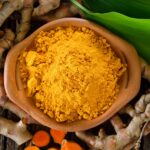When it comes to the world of spices, few are as celebrated and widely used as saffron and turmeric. Both of these golden-hued spices have been integral to culinary and medicinal practices across various cultures for centuries. However, despite their similar appearance, saffron and turmeric are fundamentally different in many aspects. This article will explore the distinctions and unique properties of saffron and turmeric, answering the question: Are saffron and turmeric the same?
Understanding Saffron

Saffron, often heralded as the “red gold,” is derived from the flower of Crocus sativus. The spice is obtained from the flower’s stigmas, which are meticulously hand-harvested and dried. This labor-intensive process contributes to saffron’s status as one of the most expensive spices in the world.
Characteristics of Saffron
- Color and Appearance: Saffron threads are thin and deep red, with a slightly lighter red or yellowish hue at one end.
- Flavor and Aroma: It has a distinctive, pungent aroma with a sweet, hay-like flavor. A small quantity can impart intense color and flavor to dishes.
- Uses: Saffron is commonly used in various cuisines, including Persian, Indian, and Mediterranean dishes. It is a key ingredient in dishes like paella, risotto, and biryani. Additionally, saffron has been utilized in traditional medicine for its purported health benefits, such as mood improvement and anti-inflammatory properties.
Exploring Turmeric
Turmeric, on the other hand, is derived from the rhizome of the plant Curcuma longa. It is widely cultivated in tropical regions, particularly in India, which is the largest producer of turmeric. Unlike saffron, turmeric is more readily available and affordable.
Characteristics of Turmeric
- Color and Appearance: Turmeric is typically found in a powdered form, bright yellow to orange in color. The fresh rhizome resembles ginger but has a distinct yellow-orange flesh.
- Flavor and Aroma: Turmeric has a warm, bitter, and earthy flavor with a mustard-like aroma. It is less potent in small quantities compared to saffron.
- Uses: Turmeric is a staple in South Asian and Middle Eastern cuisines, used in curries, soups, and rice dishes. It is also famed for its medicinal properties, particularly its active compound curcumin, which is known for its anti-inflammatory and antioxidant effects.
Are Saffron and Turmeric the Same?
To answer the question, “Is saffron and turmeric the same?” the resounding response is no. While both spices share a vibrant color and are used in cooking and medicine, their botanical origins, flavors, and uses significantly differ.
Botanical Differences
- Origin: Saffron comes from the stigmas of the Crocus sativus flower, while turmeric is derived from the rhizomes of the Curcuma longa plant.
- Harvesting Process: Saffron’s harvesting is labor-intensive and requires careful hand-picking of the delicate stigmas, whereas turmeric is harvested by uprooting and processing the rhizomes.
Culinary Uses
- Saffron: Due to its potent flavor and high cost, saffron is used sparingly. It imparts a rich color and unique flavor to dishes and is often used in luxurious recipes and festive dishes.
- Turmeric: Turmeric is more versatile and used in larger quantities. It is a staple in everyday cooking in many cultures, adding color and a subtle flavor to a wide range of dishes.
Medicinal Properties
- Saffron: Known for its potential antidepressant and antioxidant properties, saffron has been used in traditional medicine to enhance mood and improve overall health.
- Turmeric: Turmeric, particularly its active compound curcumin, is celebrated for its anti-inflammatory, antioxidant, and potential anti-cancer properties. It is commonly used in Ayurveda and other traditional medicine systems.
Conclusion
In essence, saffron and turmeric are two distinct spices with unique characteristics and applications. While they may share a similar hue and both hold esteemed positions in culinary and medicinal practices, their differences are pronounced. Saffron is a luxurious and potent spice, cherished for its unique flavor and rarity, whereas turmeric is a more common and versatile spice, renowned for its health benefits and culinary uses.
When contemplating the question, “Is saffron and turmeric the same?” it is clear that the answer is no. Understanding the unique qualities of each spice allows for better appreciation and appropriate use in various culinary and health-related contexts.




